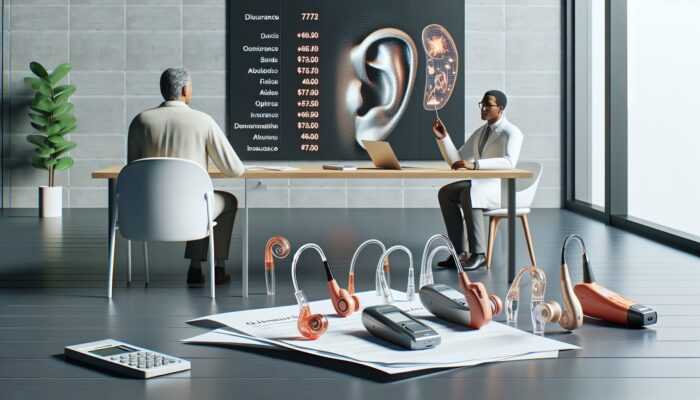Last Updated on 20/06/2025 by Admin
Understanding the Urgent Challenge of Noise Pollution in Urban Life
Noise pollution represents a significant challenge that extends beyond mere annoyance; it is a widespread issue that profoundly impacts daily life in urban centres worldwide. The bustling cityscape is characterised by a symphony of disruptive sounds, which include the incessant honking of horns, the wailing sirens of emergency vehicles, and the unending noise generated by construction and industrial activities. Developing a comprehensive understanding of noise pollution is a critical first step in exploring how to protect hearing in loud cities. This knowledge empowers individuals to take meaningful actions to safeguard their hearing health while enhancing their overall quality of life amidst the relentless urban noise.
Recognising the Major Contributors to Urban Noise Levels
Cities thrive on energy and vibrancy, yet this lively atmosphere can frequently descend into a continuous barrage of noise. The persistent hum of traffic, characterised by a relentless stream of vehicles, is a dominant contributor to heightened urban noise levels. In bustling metropolises such as New York, Tokyo, and São Paulo, the roar of engines reaches decibel levels that can severely jeopardise hearing health. Furthermore, construction sites amplify this auditory disorder, as large machinery operates incessantly to build new infrastructures and conduct renovations. Additionally, industrial activities near manufacturing plants introduce a range of disruptive sounds, including the clanging of machinery and alarming sirens.
The cumulative impact of these noise sources leads to environments where sound levels can exceed 85 decibels, a threshold recognised by health professionals as potentially detrimental. In metropolitan areas boasting well-established public transport systems, the clatter of trains and buses further contributes to the overwhelming audio landscape, exacerbating daily sound exposure. Recognising these sources not only deepens individuals’ understanding of their auditory environment but also empowers them to take proactive measures to minimise their exposure, ensuring they navigate urban life while prioritising their hearing health.
Examining the Health Implications Associated with Noise Pollution
The health consequences arising from noise pollution extend far beyond transient annoyance; they pose substantial risks to overall well-being. Continuous exposure to elevated noise levels can result in irreversible hearing loss, a condition that impacts millions globally. The World Health Organization (WHO) has established connections between ongoing exposure to noise and various serious health concerns, including cardiovascular diseases, increased stress levels, and disruptions in sleep patterns. In cities like Mumbai, where noise frequently surpasses safe limits, residents often report heightened rates of anxiety and sleep disturbances.
Additionally, the psychological effects of living in a noisy environment can manifest as increased irritability and a reduced overall quality of life. Research indicates that urban residents exposed to constant noise may experience heightened stress levels due to the persistent activation of the body’s fight-or-flight response. This underscores the importance of not only recognising the sounds that envelop us but also comprehending their potential impact on our holistic well-being. Awareness of these health implications can motivate individuals to adopt proactive strategies for how to protect hearing in loud cities.
Implementing Strategies for Accurate Noise Level Measurement
Understanding the noise levels present in your surroundings is a crucial step toward effectively managing exposure. Employing a decibel meter can provide valuable insights into the intensity of sound in various urban settings. These devices range from simple smartphone applications to professional-grade equipment that offers precise measurements of ambient noise levels. For instance, a busy street may register between 85-90 decibels, while a peaceful park could present a calming sound level of 20-30 decibels.
Regularly measuring noise levels can reveal patterns of exposure, allowing individuals to identify particularly noisy times or locations. Equipped with this knowledge, one can make informed choices about when and where to spend time, thus minimizing exposure to harmful noise. Awareness serves as the first line of defence in mastering how to protect hearing in loud cities. Heightened awareness encourages proactive behaviours, such as avoiding peak traffic periods or using protective gear in noisier environments, ultimately fostering a healthier relationship with urban living.
Investigating Regulations and Guidelines to Mitigate Noise Pollution
Governments and organisations across the globe are increasingly acknowledging the harmful effects of noise pollution. Many cities have introduced regulations aimed at reducing noise levels, particularly in residential areas. For example, cities like London and Los Angeles have implemented strict guidelines that limit noise during nighttime hours to ensure better sleep for local residents.
These regulations typically encompass noise generated from construction sites, public gatherings, and vehicular traffic, striving to strike a balance between urban vibrancy and residents’ comfort. However, enforcement often proves challenging, leading to community activism that pushes for stricter noise control measures. Understanding these regulations not only empowers residents to advocate for their rights but also educates them about the shared responsibility to foster quieter urban environments. By engaging with local policies, individuals can contribute to a collective movement towards healthier cities and discover effective strategies for how to protect hearing in loud cities.
Adopting Effective Protective Measures Against Noise Pollution
In the relentless landscape of urban noise, implementing protective measures is essential for anyone focused on preserving their hearing health. There are numerous strategies available that can significantly mitigate the risks associated with living in loud cities, enabling individuals to safeguard their auditory well-being while still enjoying the vibrancy of urban life.
Employing Earplugs for Effective Sound Protection
While earplugs may seem like a simple solution, their effectiveness is remarkably significant. Available in a variety of designs, they cater to different levels of noise exposure and environments. For instance, foam earplugs are lightweight and easily compressible, making them ideal for casual use in bustling places like restaurants or public transport. On the other hand, custom-moulded earplugs are specifically designed for individuals frequently exposed to loud conditions, such as musicians or construction workers.
These small yet powerful devices can significantly reduce sound levels, typically by 20-30 decibels, providing a protective barrier against harmful frequencies that could damage the inner ear. In cities known for their vibrant nightlife or bustling markets, such as Bangkok or Barcelona, having earplugs readily available can help alleviate the overwhelming auditory landscape, allowing individuals to enjoy their surroundings without jeopardising their hearing health. As awareness of the importance of hearing protection grows, earplugs are becoming essential accessories for city inhabitants, reinforcing the need to actively engage in how to protect hearing in loud cities.
Utilising Noise-Canceling Headphones for Enhanced Audio Control
Noise-canceling headphones represent a remarkable innovation in personal sound management technology. These devices utilise advanced technology to actively counteract background noise, enabling users to immerse themselves in music, podcasts, or simply enjoy moments of peace. The effectiveness of noise-canceling headphones varies, with specific models designed for travellers or commuters who frequently encounter loud environments.
In cities such as Chicago and Toronto, public transportation can create a cacophony of disruptive sounds. Using noise-canceling headphones transforms this experience, providing a sanctuary of calm amidst the chaos. Furthermore, many models come equipped with adjustable sound cancellation levels, allowing users to maintain awareness of their surroundings when necessary. This blend of protection and flexibility makes noise-canceling headphones an indispensable tool in the pursuit of how to protect hearing in loud cities.
Soundproofing Your Home for a More Peaceful Environment
While personal protective strategies are beneficial, the home environment is equally important in combating noise pollution. Soundproofing residential spaces can significantly reduce external noise, creating a refuge from urban clatter. Strategies range from simple solutions, such as sealing gaps in windows and doors, to more comprehensive measures like installing soundproof windows and acoustic panels.
Cities such as Berlin and Paris are known for their vibrant street life; however, the accompanying noise can infiltrate homes, disrupting daily routines and rest. Implementing soundproofing not only enhances comfort but can also increase property values, a crucial consideration for homeowners. Investing in soundproofing technologies fosters a sense of calm, which is essential for mental well-being. This proactive approach to managing residential sound can significantly influence how effectively individuals learn how to protect hearing in loud cities.
Committing to Regular Hearing Tests for Early Detection
Proactively monitoring hearing health is vital for anyone regularly exposed to elevated noise levels. Scheduling routine hearing tests allows individuals to track their auditory health and identify potential issues early. Hearing loss can develop subtly, often progressing gradually over time, making regular check-ups essential for early detection and timely intervention.
In cities like Sydney and London, public health campaigns frequently emphasise the importance of hearing assessments, especially for those working in noisy environments. Many workplaces now provide annual hearing evaluations, assisting employees in maintaining healthy hearing while minimising risks associated with occupational noise exposure. Understanding personal hearing thresholds equips individuals with the knowledge necessary to take appropriate actions when required. By prioritising regular check-ups, urban residents can remain vigilant in their efforts to learn how to protect hearing in loud cities.
Making Lifestyle Adjustments for Improved Hearing Health
Implementing lifestyle adjustments is instrumental in effectively managing exposure to urban noise, and adopting simple changes can lead to significant enhancements in hearing health. By being mindful of daily routines and sound exposure, individuals can navigate their environments more efficiently and protect their auditory well-being.
Minimising Time Spent in Noisy Environments
Limiting the amount of time spent in high-noise environments is a straightforward yet effective strategy for protecting hearing health. Daily commutes, crowded events, and even working in open office spaces can expose individuals to high noise levels that accumulate over time and potentially lead to hearing damage. By consciously reducing time spent in these settings, individuals can effectively lower the risk of developing noise-induced hearing loss.
In cities like Mumbai or Jakarta, where street noise can be overwhelming, finding quieter routes for commuting or running errands can make a significant difference. Opting to walk or cycle through parks not only reduces exposure to noise but also encourages physical health. Incorporating breaks from loud environments into daily routines fosters a more balanced lifestyle, allowing individuals to recharge and prioritise their auditory well-being. By intentionally managing exposure time, residents can make meaningful progress toward how to protect hearing in loud cities.
Establishing Scheduled Quiet Time for Relaxation
Amid the hustle and bustle of urban life, scheduling designated quiet time is essential for both mental and auditory health. Allocating specific periods during the day for silence can provide much-needed relief from continuous sound exposure. This could involve unplugging from technology, meditating, or simply enjoying a quiet meal.
Cities such as Amsterdam or Copenhagen, celebrated for their serene parks and waterfronts, offer beautiful settings for moments of tranquillity. Prioritising quiet time allows individuals to recalibrate and give their ears a break from the constant barrage of noise. Furthermore, incorporating mindfulness practices can enhance overall well-being, making quiet time an essential element of a healthy urban lifestyle. By prioritising these moments, individuals can actively contribute to how to protect hearing in loud cities.
Choosing Quieter Routes for Daily Activities
Opting for quieter paths during commutes or daily activities can significantly reduce noise exposure. Numerous cities, such as Oslo and Vancouver, have invested in green spaces and pedestrian-friendly areas that help mitigate sound pollution. When walking or cycling, residents can select routes that pass through parks or less-trafficked streets, resulting in a more peaceful experience.
Strategically choosing public transportation options also contributes to reduced noise exposure. For example, selecting trains over buses can sometimes provide a quieter journey through noise-sensitive areas. By intentionally choosing their routes, individuals can cultivate a more harmonious connection with their surroundings. Over time, these thoughtful choices accumulate, contributing to a deeper understanding of how to protect hearing in loud cities.
Participating in Community Initiatives to Address Noise Pollution
Community involvement is essential in addressing noise pollution on a broader scale. Initiatives that promote quieter environments can foster collective awareness and inspire changes that benefit all residents. By collaborating, communities can create lasting impacts on urban noise levels and enhance overall quality of life.
Creating and Supporting Quiet Zones for Community Benefits
Quiet zones represent a proactive approach to managing urban noise levels. By designating specific areas where noise is minimised, cities can create serene retreats for residents seeking peace. These zones can be established in parks, residential neighbourhoods, or even around schools to protect vulnerable populations from excessive noise exposure.
Cities like Tokyo have successfully implemented quiet zones within their public transportation systems, ensuring that certain areas are reserved for those desiring a quieter experience. Promoting these zones not only improves the quality of life for residents but also raises awareness about the importance of sound management in urban planning. By advocating for and supporting the establishment of quiet zones, communities can take meaningful steps toward fostering tranquil environments, ultimately learning how to protect hearing in loud cities.
Launching Community Campaigns for Noise Reduction Awareness
Community-driven noise reduction campaigns can effectively raise awareness regarding the impacts of noise pollution. These initiatives often encompass educational workshops, public events, and outreach programmes designed to inform residents about sound management and encourage them to adopt quieter practices.
For instance, cities like San Francisco have hosted awareness campaigns urging residents to be mindful of their noise levels, particularly during nighttime hours. Through social media, community boards, and local events, residents can engage with one another and learn about their collective responsibility to reduce noise. Supporting these campaigns fosters a culture of awareness and care, promoting a healthier urban environment where individuals are more informed about how to protect hearing in loud cities.
Advocating for Supportive Legislation to Control Noise Pollution
Advocating for laws designed to limit noise levels produced by vehicles and industrial sources is essential for effecting long-term change. Community members can unite to petition local governments, championing regulations that protect residents from excessive noise pollution.
Cities like Los Angeles have seen grassroots movements advocating for stricter noise ordinances, reflecting the collective desire for quieter urban spaces. Supporting legislation that prioritises noise control can result in significant reductions in overall sound levels, enhancing the quality of life for residents. By actively participating in advocacy efforts, individuals can influence local policies and bolster awareness regarding how to protect hearing in loud cities.
Organising Community Workshops on Noise Reduction Techniques
Facilitating community workshops can provide valuable education on noise control techniques and the importance of maintaining quiet environments. These workshops can feature expert speakers, demonstrations of soundproofing methods, and discussions about effective policy advocacy.
Engaging local residents in these events not only promotes awareness but also fosters a sense of community, where individuals can share experiences and solutions. Cities like Toronto often host such workshops, empowering residents with the knowledge they need to advocate for their rights and implement practical changes in their lives. By participating in these educational initiatives, communities can collectively explore how to protect hearing in loud cities.
Engaging in Volunteer Noise Monitoring Programs for Community Awareness
Involving community members in volunteer noise monitoring can foster a grassroots approach to tracking noise levels in neighbourhoods. Residents can engage in measuring sound levels, collecting data, and reporting their findings to local authorities.
Cities like Berlin have experienced success with such initiatives, where community members actively participate in assessing noise pollution and advocating for changes based on their findings. By engaging residents in noise monitoring, communities can cultivate a sense of ownership and accountability regarding their sound environment. This involvement not only raises awareness about the challenges posed by noise pollution but also empowers individuals to take action and discover effective methods for how to protect hearing in loud cities.
Utilising Technological Innovations to Combat Noise Pollution
In our technology-driven era, various innovations provide practical solutions to the challenges posed by urban noise. From smartphone applications to smart home devices, these advancements can significantly enhance auditory comfort and promote better health outcomes.
Leveraging Smartphone Applications for Noise Level Tracking
Smartphone applications designed to measure and track noise exposure are becoming invaluable tools for urban residents. Many of these apps analyse ambient sound levels, providing users with insights into their daily noise exposure. From basic sound level meters to advanced noise monitoring systems, these applications empower individuals to make informed decisions about their environments.
In cities like New York and Los Angeles, users can monitor noise levels throughout the day, identifying peak times and locations to avoid. Some applications even offer personalised recommendations based on users’ exposure levels, encouraging proactive measures to protect hearing. By harnessing technology, residents can navigate the urban soundscape more effectively and implement practical strategies for how to protect hearing in loud cities.
Integrating Smart Home Devices for Enhanced Noise Management
Smart home technologies are transforming how residents manage noise levels within their living spaces. Innovations such as automated window treatments can help diminish sound intrusion from busy streets, while advanced soundproofing systems enhance the tranquillity of home environments.
In cities renowned for their lively street life, like New Orleans or Istanbul, these technologies can provide a much-needed barrier against external noise. By integrating smart home devices into their living spaces, residents can create personalised sanctuaries that prioritise comfort and health. Investing in these technologies underscores the importance of actively engaging with solutions for how to protect hearing in loud cities.
Installing Noise Barriers for Effective Sound Management
Noise barriers present a tangible solution to the difficulties associated with urban sound. Installing barriers in strategic locations can effectively block or reduce the transmission of sound waves from noisy sources. Several cities, such as Sydney and Madrid, have implemented noise barriers along highways and industrial zones to protect nearby residents from excessive noise exposure.
These barriers not only improve residents’ quality of life but also contribute positively to the overall aesthetics of urban landscapes. By investing in noise barriers, cities can take significant steps toward creating quieter environments, greatly impacting the health and well-being of their inhabitants. As awareness of this issue expands, the importance of implementing noise barriers becomes crucial for understanding how to protect hearing in loud cities.
Formulating Long-Term Strategies for Sustainable Noise Management
For meaningful improvements in urban soundscapes, long-term strategies are essential. Educating the public, investing in research, and adopting effective urban planning practices can promote environments that prioritise hearing health and well-being.
Enhancing Education and Awareness Regarding Noise Pollution
Raising public awareness about the risks associated with noise pollution is a foundational strategy for fostering long-term behavioural changes. Schools, community organisations, and local governments can collaborate to create informative programmes that underscore the importance of hearing protection.
Cities like Berlin have successfully integrated noise awareness initiatives into educational curricula, teaching students about the effects of noise pollution from an early age. By instilling this critical knowledge, communities can nurture a generation that values auditory health and engages in practices that promote quieter environments. Raising awareness is vital in the ongoing effort to discover how to protect hearing in loud cities.
Encouraging Research and Development for Innovative Noise Reduction Solutions
Investing in research and development is crucial for creating new technologies and methodologies aimed at noise reduction. Collaborative efforts among universities, urban planners, and technology companies can yield inventive solutions tailored to the unique challenges of urban environments.
Cities like San Francisco have effectively pursued collaborations focused on enhancing urban acoustics, resulting in more efficient sound management strategies. By prioritising research initiatives, communities can develop cutting-edge solutions that directly address noise pollution challenges. This commitment to innovation is essential for cultivating a healthier urban soundscape and informing residents on how to protect hearing in loud cities.
Integrating Noise Reduction Strategies into Urban Planning Frameworks
Incorporating noise reduction strategies into urban planning is critical for creating quieter living spaces. City planners can design neighbourhoods with sound mitigation in mind, employing green spaces, sound barriers, and thoughtful building placements to reduce sound intrusion.
Cities like Singapore exemplify progressive urban planning, where parks and green corridors are seamlessly integrated into the urban environment. This approach enhances not only the city’s visual appeal but also significantly contributes to lowering overall noise levels. By prioritising noise reduction in urban planning efforts, cities can pave the way for healthier living environments, showcasing effective methodologies for how to protect hearing in loud cities.
Advocating for Policy and Regulation to Manage Noise Pollution
Implementing and enforcing noise control policies is essential for maintaining reductions in urban noise levels. Governments must prioritise the creation and enforcement of regulations that protect residents from excessive noise exposure.
Cities like Zurich have established comprehensive noise control measures, regulating industrial operations and imposing stricter penalties for violations. These policies not only improve the quality of life for residents but also foster a culture of accountability among businesses and organisations. By advocating for robust noise control policies, community members can contribute to lasting improvements in urban soundscapes, reinforcing the importance of how to protect hearing in loud cities.
Frequently Asked Questions Regarding Noise Pollution Management
What are the most significant contributors to noise pollution in urban areas?
Traffic, construction activities, industrial operations, and public events represent the primary sources of noise pollution in cities. These factors contribute to elevated decibel levels that can adversely affect health and well-being.
How can I effectively monitor noise levels in my environment?
Utilising decibel meters or smartphone applications designed to measure ambient noise levels can assist you in monitoring your surroundings. Regularly assessing your environment can help identify peak noise periods and locations.
What are some effective techniques for reducing noise at home?
Implementing soundproofing solutions for windows and doors, using heavy curtains, and installing acoustic panels are effective methods for minimising noise intrusion in residential settings.
How do noise-canceling headphones work?
Noise-canceling headphones employ technology to detect ambient sounds and generate sound waves that counteract these noises, resulting in a quieter listening experience.
Why is it essential to undergo regular hearing tests?
Regular hearing assessments are vital for monitoring auditory health and detecting changes early. This proactive approach helps prevent noise-induced hearing loss and allows for timely intervention.
What are quiet zones, and how do they benefit urban residents?
Quiet zones are designated areas where noise levels are minimised, providing serene spaces for residents to escape the urban clamor. These zones enhance quality of life and promote mental well-being.
How can communities advocate for initiatives to reduce noise pollution?
Communities can advocate by organising campaigns, petitioning local governments for regulations, and participating in educational workshops focused on noise pollution.
What role do smartphone applications play in managing noise exposure?
Smartphone applications can measure and track noise exposure, enabling individuals to monitor their daily noise levels and make informed decisions about their environments.
How can urban planning contribute to reducing noise levels?
Incorporating noise mitigation strategies, such as green spaces and sound barriers, into urban planning helps create quieter living environments and enhances overall quality of life for residents.
What technological solutions are available for noise reduction?
Innovative solutions include noise barriers, smart home devices, and noise-canceling headphones, all designed to minimise exposure to harmful urban sounds and improve auditory comfort.
Explore our journey on X!
The post Protect Hearing in Loud Cities with These Essential Tips appeared first on The Microsuction Ear Wax Removal Network.
The post Protect Hearing in Loud Cities with These Essential Tips appeared first on Healthcare Marketing Service.























